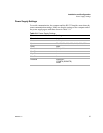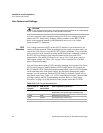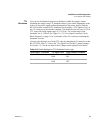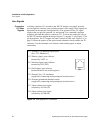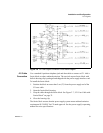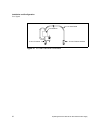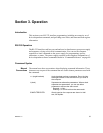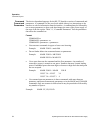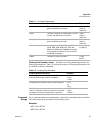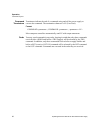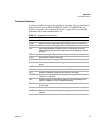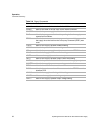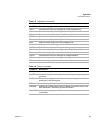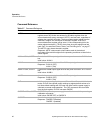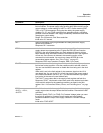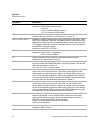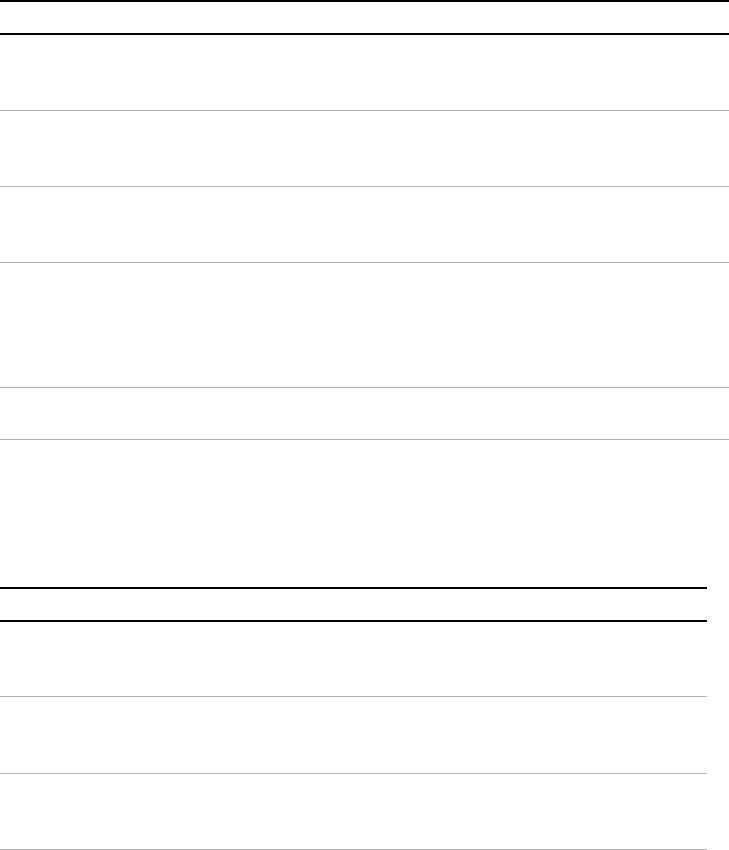
Operation
Command Syntax
Release 1.2 35
Table 3.1 Command Parameters
Floating Point Number <float> Variables sent with command parameters are
floating point numbers. Table 3.2 defines the structure of floating point numbers for
use with the software commands.
Table 3.2 Floating Point Numbers
Command
Strings
If you send more than one command line, separate the commands with a semicolon.
The semicolon may be preceded or followed by spaces.
Example:
Parameter Description Form
<current>, <Ihi>, <Ilo> The current in amps or milliamps. If no unit is
given, the default unit is amps.
<float>
<float>A
<float>mA
<time> The time in seconds or milliseconds. If no unit
is given, the default unit is seconds.
<float>
<float>s
<float>ms
<voltage>, <Vlo>, <Vhi> The voltage in volts or millivolts. If no unit is
given, the default unit is volts.
<float>
<float>V
<float>mV
<mnemonics> A combination of CV, CC, CV, OV, OT, SD,
FOLD, ERR, PON, REM, ACF, OPF, and
SNSP. See MASK and UNMASK commands
in the command reference for use of the ALL
and NONE parameters.
See registers
on page 47.
<state> The state of a binary condition. <1/ON,
0/OFF>
Floating Number Definition Example
The floating point number has four significant figures.
It can be of either sign, positive or negative.
1.234
-1.234
+1.234
A floating point number can have one decimal point. 0.123
1.2
123.4
Scientific Notation
Use E or e after the number for a base ten exponent.
An integer of either sign must follow an exponent.
123.0E-1
1.2E-1
10.00E+1
ISET 2.0A; VSET 5V
ISET 2.0A; VSET 5V



